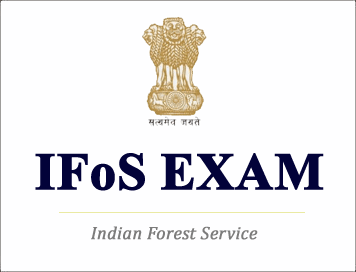(HOT) UPSC Current Affairs 2025 PDF
NEW! The Gist (NOV-2025) | E-BOOKS
UPSC IFOS Exam Syllabus : Agriculture
UPSC IFOS Exam Syllabus : Agricultural Engineering
::Agriculture ::
PAPER-I
Ecology and its relevance to man, natural resources, their sustainable management and conservation. Physical and social environment as factors of crop distribution and production. Climatic elements as factors of crop growth, impact of changing environment on cropping pattern as indicators of environments. Environmental pollution and associated hazards to crops, animals, and humans.
Cropping pattern in different agro-climatic zones of the country. Impact of highyielding and short-duration varieties on shifts in cropping pattern. Concepts of multiple cropping, multistorey, relay and intercropping, and their importance in relation to food production. Package of practices for production of important cereals, pulses, oil seeds, fibres, sugar, commercial and fodder crops grown during Kharif and Rabi seasons in different regions of the country. Important features, scope and propagation of various types of forestry plantations such as extension, social forestry, agro-forestry, and natural forests.
Weeds, their characteristics, dissemination and association with various crops; their multiplication; cultural, biological and chemical control of weeds. Soil-physical, chemical and biological properties. Processes and factors of soil formation. Modern classification of Indian soils, Mineral and organic constituents of soils and their role in maintaining soil productivity. Essential plant nutrients and other beneficial elements in soils and plants. Principles of soil fertility and its evaluation for judicious fertilizer use, integrated nutrient management. Losses of nitrogen in soil, nitrogen-use efficiency in submerged rice soils, nitrogen fixation in soils. Fixation of phosphorus and potassium in soils and the scope for their efficient use. Problem soils and their reclamation methods.
Soil conservation planning on watershed basis. Erosion and run-off management in hilly, foot hills, and valley lands; processes and factors affecting them. Dry land agriculture and its problems. Technology of stabilising agriculture production in rain fed agriculture area.
Water-use efficiency in relation to crop production, criteria for scheduling irrigations, ways and means of reducing run-off losses of irrigation water. Drip and sprinkler irrigation. Drainage of water-logged soils, quality of irrigation water, effect of industrial effluents on soil and water pollution.
Farm management, scope, important and characteristics, farm planning. Optimum resources use and budgeting. Economics of different types of farming systems. Marketing and pricing of agricultural inputs and outputs, price fluctuations and their cost; role of co-operatives in agricultural economy; types and systems of farming and factors affecting them.
Agricultural extension, its importance and role, methods of evaluation of extension programmes, socio-economic survey and status of big, small, and marginal farmers and landless agricultural labourers; farm mechanization and its role in agricultural production and rural employment. Training programmes for extension workers; labto-land programmes.
PAPER-II
Cell Theory, cell structure, cell organelles and their function, cell division, nucleic acids-structure and function, gene structure and function. Laws of heredity, their significance in plant breeding. Chromosome structure, chromosomal aberrations, linkage and cross-over, and their significance in recombination breeding. Polyploidy, euploid and an euploids. Mutation-micro and macro-and their role in crop improvement. Variation, components of variation. Heritability, sterility and incompatibility, classification and their application in crop improvement. Cytoplasmic inheritance, sex-linked, sex influenced and sex-limited characters.
History of plant breeding. Modes of reproduction, selfing and crossing techniques. Origin and evolution of crop plants, centre of origin, law of homologous series, crop genetic resources-conservation and utilization. Application of principles of plant breeding to the improvement of major field crops. Pure-line selection, pedigree, mass and recurrent selections, combining ability, its significance in plant breeding. Hybrid vigour and its exploitation, backcross method of breeding, breeding for disease and pest resistance, role of inter-specific and inter-generic hybridization. Role of biotechnology in plant breeding. Improved varieties, hybrids, composites of various crop plants.
Seed technology, its importance. Different kinds of seeds and their seed production and processing techniques. Role of public and private sectors in seed production, processing and marketing in India.
Physiology and its significance in agriculture. Imbibitions, surface tension, diffusion and osmosis. Absorption and translocation of water, transpiration and water economy. Enzymes and plant pigments; photosynthesis-modern concepts and factors affecting the process, aerobic and non-aerobic respiration; C, C and CAM mechanisms. Carbohydrate, protein and fat metabolism. Growth and development; photo-periodism and vernalization. Auxins, hormones, and other plant regulators and their mechanism of action and importance in agriculture. Physiology of seed development and germination; dormancy.
Climatic requirements and cultivation of major fruits, plants, vegetable crops and flower plants; the package of practices and their scientific basis. Handling and marketing problems of fruit and vegetables. Principal methods of preservation of important fruits and vegetable products, processing techniques and equipment. Role of fruits and vegetables in human nutrition. Raising of ornamental plants, and design and layout of lawns and gardens.
Diseases and pests of field vegetables, orchard and plantation crops of India. Causes and classification of plant pests and diseases. Principles of control of plant pests and diseases Biological control of pests and diseases. Integrated pest and disease management. Epidemiology and forecasting. Pesticides, their formulations and modes of action. Compatibility with rhizobial inoculants. Microbial toxins.
Storage pests and diseases of cereals and pulses, and their control. Food production and consumption trends in India. National and international food policies. Production, procurement, distribution and processing constraints. Relation of food production to national dietary pattern, major deficiencies of calorie and protein.



